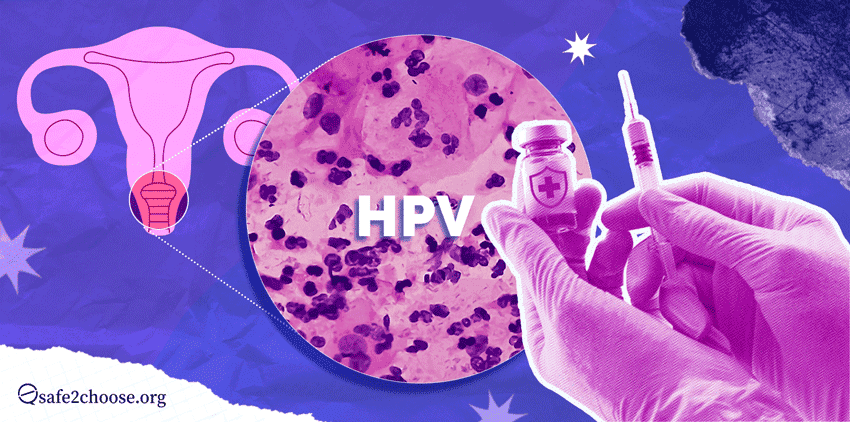What Is HPV and How Does it Affect the Body?
HPV (human papillomavirus) is a common virus spread via intimate skin-to-skin contact. You can get HPV through vaginal, oral, or anal sex, even if no symptoms are present.
Almost everyone will contract HPV at least once, regardless of their sex, sexual orientation, or gender identity. Roughly 13 million people in the US get HPV yearly.
HPV can sometimes lead to cancer later in life. More than 42 million Americans currently have the HPV that can cause disease. Thus, it is important to take proper precautions to prevent and treat it (1).
What Are the Different Types of HPV?
There are over 200 types of HPV-related viruses that are either low- or high-risk.
- Low-risk HPV. Low-risk forms of HPV rarely cause cancer. However, they may still cause warts on or around the genitals, mouth, anus, or throat. Warts in the respiratory tract or larynx can lead to breathing issues.
- High-risk HPV. High-risk forms of HPV can cause different types of cancer. There are 12 types of high-risk HPVs.
Roughly half of all infections are considered high-risk HPV. However, most HPV infections will clear without causing any type of cancer because the immune system fights them off (2).
How Can You Tell If You Have HPV?
Common HPV symptoms:
- no symptoms – many cases go unnoticed;
- genital warts – small bumps on the genitals or anus;
- oral warts – growths in the mouth or throat;
- cervical changes – abnormal pap smear results; and
- cancer – vulvar, penile, anal, and throat – changes in skin, painful sores, lumps, itching, bleeding, discharge, etc. (3).
If you have any of these symptoms, it is important to see a health-care provider immediately.
How Do You Get HPV? Myths vs. Facts
There’s a lot of confusion around how HPV may be transmitted. Let’s clear up the facts.
- Myth 1: HPV is only transmitted through sexual intercourse.
Fact: HPV is transmitted through skin-to-skin contact, which means that it can be spread through sexual activity other than intercourse (2). - Myth 2: You can only get HPV if you’ve had multiple sexual partners.
Fact: HPV can be transmitted through contact with one infected person, regardless of how many sexual partners you have had. - Myth 3: Condoms completely protect you from HPV.
Fact: Using condoms correctly can lower your risk of getting HPV, however, it doesn’t prevent the risk entirely (2). - Myth 4: HPV is only a concern for women.
Fact: HPV affects both men and women. - Myth 5: The HPV vaccine is only for teenagers.
Fact: Although it’s recommended that the HPV vaccine be given to children between 11 and 12, it is beneficial for older adults to prevent cancer and genital warts. - Myth 6: If you have HPV, you will definitely get cancer.
Fact: The majority of HPV infections are cleared by the body’s immune system. Only a small percentage of HPV infections cause cancer, and regular screenings and vaccinations can prevent it.
Does HPV Cause Cancer? Prevention and Vaccine Guide
Every year, HPV leads to around 36,000 cases of cancer in both women and men; vaccination is one of the best ways to protect yourself. The vaccine works best when given before any exposure to the virus, which is why it’s recommended for those aged 11 to 12.
How effective is the vaccination? It has the potential to prevent as much as 90% of HPV-related cancers. Since the vaccines were rolled out in 2006, the incidences of HPV-related cancers and genital warts have declined as much as 88% in teen girls and 81% in young adult women in the US (4).
How Is HPV Diagnosed? Tests and Screenings Explained
Screening involves checking for HPV even when there aren’t any symptoms. Cervical cancer screening involves an HPV test that checks cervical cells for high-risk HPV, a pap smear that detects cervical cell changes, or a combination HPV/pap co-test that checks for both. Anal pap tests can sometimes be done, however, there are no screening tests for oropharyngeal, penile, or vaginal cancer (3).
When Treatment Is Needed for HPV and Related Conditions
HPV will usually go away on its own. However, HPV can also cause dysplasia, which is the abnormal growth of cells, which should be treated with surgery, topical therapies, cold knife conization, or a Loop Electrosurgical Excision Procedure (LEEP) (3).
Living with HPV: Tips and Support
Strategies to deal with HPV:
- Follow medical advice.
- Have regular check-ups with your health-care provider.
- Practice safe sex – use condoms or dental dams.
- Communicate with partners.
Abortion and HPV
HPV does not affect the safety or outcome of an abortion. However, it’s important to let your health-care provider know about your condition to ensure you receive the best care.
For reliable abortion resources and counseling, visit safe2choose.


